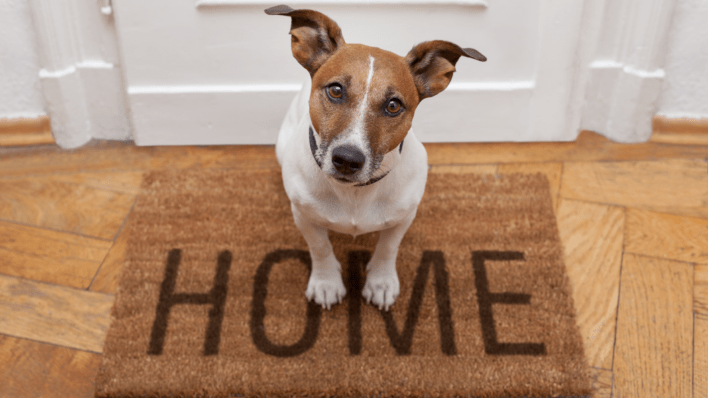Full article with thanks to: bournesmoves.com/home-moves/moving-house-with-pets
They say no home is complete without one or two, but when it comes to moving house with pets it can be a challenge.
TOP TIPS FOR MOVING WITH PETS
There’s no doubt that moving house with pets in tow will increase your stress levels both in the run up to and on the day itself as you worry about their wellbeing. But there are several things you can do to reduce the stress and keep everyone happy:
1. Arrange for a separate place for pets on moving day
On the day of your move, your behaviour will affect how your pets behave, particularly if you’re feeling a bit stressed.
To avoid unnecessary upset and to keep the paths clear for your removal crew, arrange for one room in the house away from all the activity to be used as a temporary pet room. Clear it out first, then put your pet(s) in there along with anything that will keep them comfortable for the duration, such as bedding, toys, food, water and litter trays.
Keep the doors and windows shut and place a sign on the door so that your removal crew know why they can’t go in there. Better still, see if pets can stay with a family member or friend on the day of the move, eliminating them from the chaos altogether.
2. Set up a comfortable place for pets on arrival at your new home
When you arrive at your new home the same applies – find somewhere quiet that’s out of the way where pets can sit comfortably while you move in. Make it comfortable and help them feel at home with their familiar things.
Check on them regularly to make sure they’re not too distressed about everything going on around them.
3.Try to keep your pet’s routine when you move
Much like with children, when moving house with pets it’s always best to try and keep to any routines you have as best you can. Sticking to their regular walking and feeding times where possible helps to maintain stability and avoid too much confusion.
4. Help your pet get familiar with their new area in advance of the move
If you’re not moving too far away, it is sometimes a good idea to take your dog to the new area prior to the move so he or she can get accustomed to their new walking route. Once in your new house, check that fences and gates are secure before letting them out into the garden.
5. Keep cats indoors for a little while at first
With cats, it’s always advisable to keep them in the new house for a week or so post-move to help them adjust to their new surroundings.
Cats tend to be more stressed by a house move than dogs and will need a bit of time to get their bearings.
Introduce them to each room in the house one at a time, keeping a close eye on them (particularly anxious cats will seek out places to hide and may get stuck).
Keeping meal times the same will help settle them as they’ll recognise their old routine. Once you start letting them out, do so on an empty stomach so that they get used to returning back to their new home to be fed.
6. Talk to old neighbours about the move in case your pet visits
It’s not uncommon for cats to try and return to their old houses, particularly if you’re only moving a short distance away.
If you’re worried about this then warn your old neighbours to keep an eye out and tell them not to feed or pet the cat if they do see him – this will only serve to confuse him and encourage him to keep returning. Making sure your cats (and dogs) are tagged and microchipped before the move is always a good idea.
7. Tell your removal company up front about any pets included in your move
If you’re transporting more exotic animals like tropical fish, reptiles or amphibians, then speak to your removal company about it – don’t do what the entrants above did with their snakes and try and keep it quiet!
The moving company may need special equipment, materials or skills to pack your pet’s belongings – most companies will be used to requests of this nature, so don’t be afraid to ask if they’ve got any recommendations for transportation!
8. Register with a vet in your new area
If you’re moving further away don’t forget to register your pet with a vet in your new area.
Full article with thanks to: bournesmoves.com/home-moves/moving-house-with-pets
We offer free advice on pet travel within or outside the UK, so whether you’re looking for worldwide pet travel services or European travel – we give you our honest, expert advice.
If you choose us for pet travel, don’t worry – your animal companion will be in safe hands from start to finish.
Simply get a quote from us for more information.

